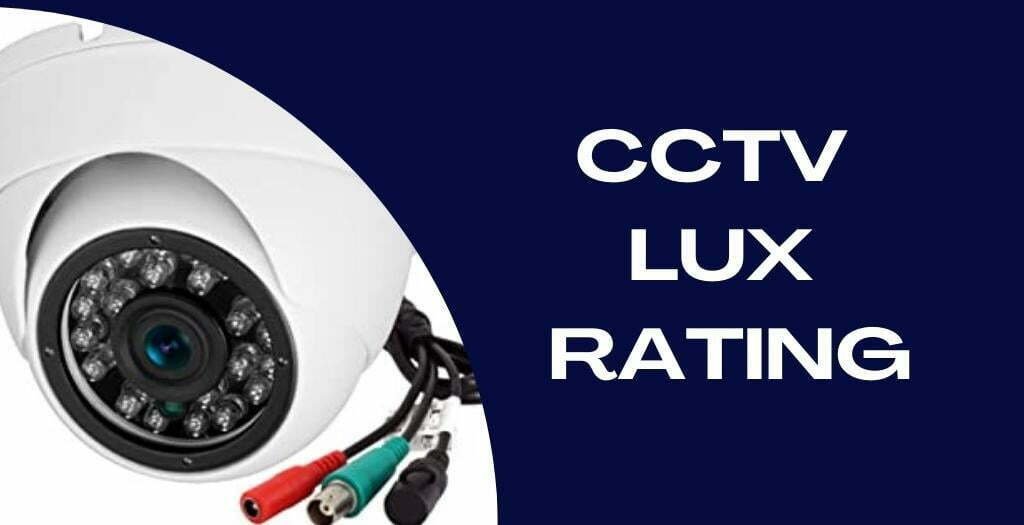Discussing CCTV Camera LUX rating: A camera’s ability to capture footage in low light is known as LUX in the CCTV industry. LUX defines the quantity of light that CCTV rating can take up (lumens per square meter). Luxes are measured using the candela, which is based on another unit of measurement for light called a lumen. The footcandle is a non-SI unit of light measurement. It is defined by the quantity of light emitted by one candle when placed at a distance of one meter from one another. The intensity of light is measured using the International System of Units (SI) unit LUX. The available light intensity that a camera can generate an image in determines a camera’s LUX rating.
CCTV Camera LUX Rating Scale of Glory
- 10,000 Lumens of Light Awarded by the Sun
- Full Daylight 1000 LUX.
- A bright and airy Office 500 LUX space.
- 300 LUX comfortable Reading
- 100 LUX for a Cloudy Day
- 10 Lux in the Dark
- Luxury at Dusk
- A.1 LUX of Deep Twilight
- One LUX of the Full Moon
- A total absence of light 0 LUX
A few high-quality CCDs may provide a satisfactory image down to a lux level.1 or less. To view in the dark, the camera will need to have infrared LEDs installed. Cameras that use infrared light, sometimes known as “night vision,” are the common name for these devices. You may find the number of LEDs in your camera’s specs by looking at their box or website. It’s common for customers to compare this to its low-light capabilities. The type of LED utilized might be more essential than the number of LEDs in use. Compared to other LEDs, some emit 10 times more light per watt. As a result, these cameras may be more difficult to detect. The simplest approach to comparing infrared cameras is to look at how many feet they can illuminate and how wide their light spreads.
You May Also Read: House CCTV System Application
How Bright Is Your Security Camera?
Different areas of knowledge can be used to determine the LUX ratings of security cameras. It’s a combination of the lens, “F stop,” and the sensor chip that determines a camera’s quality. The less light a security camera requires to capture usable footage, the lower its LUX rating. The LUX rating of sensor chips often uses CMOS and CCD sensors as the most prevalent sensor types. CMOS sensors need a higher level of illumination. These cameras will have greater LUX ratings because of this sensor. The more expensive a camera is, the more sensitive its sensor is and the less light it requires to generate a picture.
The camera’s LUX rating can be influenced by the lens as well as the sensitivity of the CCD or CMOS chip. Although the lenses appear to be perfectly clean, they are nevertheless capable of absorbing some of the light that passes through them. Lenses with filter technology, larger-than-normal size, or a specific design alter the LUX CCTV rating of a camera.
Conclusion
Light can also travel via a hole or opening in the camera before it reaches the sensor. The “F-stop,” or aperture, is the term for this. The image will remain sharper and closer to the camera as the F-stop decreases. Objects at a distance will be sharply focused if the aperture is raised. Low f-stops aren’t necessary for capturing a specific object. Higher f-stop numbers demand lighter.
A CCTV Camera LUX rating value of 1.0 or below is typical for most security cameras. Ratings as low as.003 LUX are possible. To obtain readings below 0.0 LUX, you’ll need an infrared camera. It requires an infrared image instead of visible light in order to take a photo because of this.
FAQ (Frequently Asked Questions)
The word “LUX” describes the Low-light video capture performance in CCTV and security cameras. LUX is a unit of measurement for light intensity (lumens per square meter). An individual LUX is equal to one candle’s worth of light at a distance of one meter.
Our home security camera collection includes cameras that provide up to 10.75 lumens and those that can provide 107.53 lumens.
Generally speaking, when we talk about low lux surveillance, we’re talking about cameras that can record pictures of usable quality even in dim light without the need for auxiliary lighting.
CCTV does not precisely specify a camera’s minimum illumination, unlike its sensitivity. It’s commonly used to describe the lowest level of light at which a camera can produce a video signal that can be recognized by the human eye. The object at which such a signal is acquired is consequently used to represent it using luxes.

